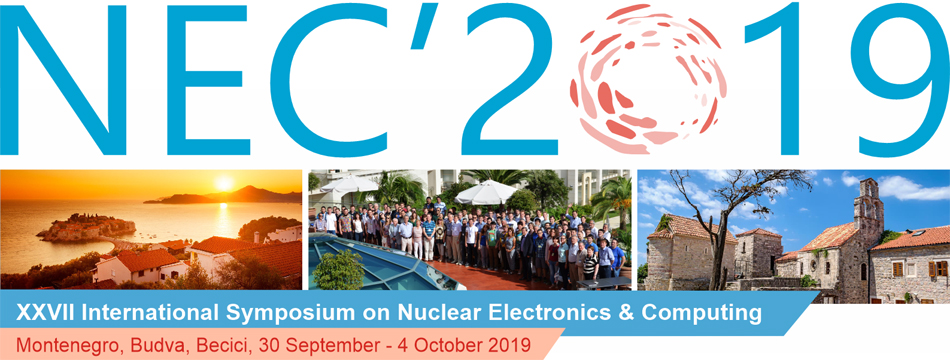Speaker
Oleg Samoylov
(JINR)
Description
NOvA is a long-baseline neutrino experiment aiming to study neutrino oscillation phenomenon in the muon neutrino beam from complex NuMI at Fermilab (USA). Two identical detectors have been built to measure the initial neutrino flux spectra at the near site and the oscillated one at a 810 km distance, which significantly reduces many systematic uncertainties. To improve electron neutrino and neutral current interaction separation, the detector is constructed as a finely segmented structure filled with liquid scintillator. Charged particles lose their energy in the detector materials, producing light signal in a cell which are recorded by readout electronics. The simulation models this using the following chain: a parameterized front-end simulation converts all energy deposits in active material into scintillation light, the scintillation light is transported through an optical fiber to an avalanche photodiode, and the readout electronics simulation models the shaping, digitization, and triggering on the response of the photodiode. Two test stands have been built in JINR (Dubna, Russia) to measure the proton light response of NOvA scintillator and the electronic signal shaping of the NOvA front-end-board. The parameters measured using these test stands have been implemented in the custom NOvA simulation chain.
Author
Oleg Samoylov
(JINR)

